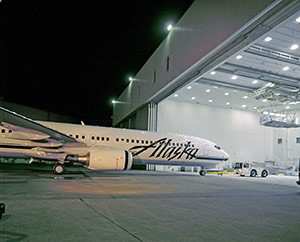There is increasing interest in getting from A to B on time and
with less fuel. No question that's also a big driver for us here,
as those of us who've sat on a summer tarmac can well attest. We're
here to talk about something that's going to help. Let me tell you,
Performance-Based Navigation can make a difference. When I say,
"performance-based navigation," I'm talking about RNP and RNAV:
Required Navigation Performance and Area Navigation. They're
already saving millions.
Performance-based navigation is an important part of the NextGen
modernization plan, and it isn't just happening here in the States.
In fact, ICAO just published a manual for performance-based
navigation. Working together with Eurocontrol, we'll be teaching
courses jointly in all ICAO regions starting in September. They'll
conclude the following summer.
As many of you know, RNAV procedures create more lanes in
limited airspace. Pilots can reroute around weather. RNAV helps
aircraft avoid longer routes. With RNAV, we've implemented 155
arrivals and departures to date at 38 airports, with 42 more to be
published by the end of the year. RNAV is saving about 8.5 million
dollars per year annually at DFW. Delta reports savings of 36
million annually at Atlanta. We're also seeing capacity benefits
with RNAV. At DFW, RNAV departures are allowing between eleven and
twenty additional operations per hour. Results are similar at
Atlanta, with an additional 10 departures per hour.
RNP is making the same kind of headway. RNP takes advantage of
an airplane's onboard navigation capability to fly a more precise
flight path into an airport. RNP increases airport access during
marginal weather.
 Alaska Airlines
reported more than 980 "diversion saves" in 2006 due to RNP. That's
when an airplane normally would have to be diverted because of
weather. We have 37 RNP approaches in place at 17 airports, with
another 34 approaches that should be in place by the end of the
year. On May 10, we plan to publish 10 more RNP approach procedures
at Atlanta and three at DFW. We plan to publish at least 25
approaches next year.
Alaska Airlines
reported more than 980 "diversion saves" in 2006 due to RNP. That's
when an airplane normally would have to be diverted because of
weather. We have 37 RNP approaches in place at 17 airports, with
another 34 approaches that should be in place by the end of the
year. On May 10, we plan to publish 10 more RNP approach procedures
at Atlanta and three at DFW. We plan to publish at least 25
approaches next year.
In addition, I'd be remiss not to mention that on March 6, Delta
received approval for its 737-800 fleet to fly RNP approaches. They
join Horizon, Alaska and Continental airlines, which also have RNP
approvals. This group's growing. Late yesterday afternoon, I
learned that the entire Southwest fleet is going to be equipped for
RNP. That means all new planes and a retrofit of what's in the
fleet now. Let me tell you, this is a tipping point for
performance-based navigation.
Performance-based navigation is green. It flat out saves fuel.
It relieves congestion, alleviates choke points and reduces delays.
It increases efficiency by providing smoother traffic flow. It's
clear that performance-based navigation is good for the
environment. Flying straight down the middle of a flight path means
that people on the ground perceive less jet noise and experience
fewer engine emissions.
Bottom line: Performance-based navigation is the right thing at
the right time. Performance-based navigation allows us to move more
planes safely and efficiently. For the passenger, that's the best
news of all.
 ANN's Daily Aero-Term (05.09.24): Hold Procedure
ANN's Daily Aero-Term (05.09.24): Hold Procedure ANN's Daily Aero-Term (05.06.24): Altitude Readout
ANN's Daily Aero-Term (05.06.24): Altitude Readout ANN's Daily Aero-Linx (05.06.24)
ANN's Daily Aero-Linx (05.06.24) Airborne-NextGen 05.07.24: AI-Piloted F-16, AgEagle, 1st 2 WorldView Sats
Airborne-NextGen 05.07.24: AI-Piloted F-16, AgEagle, 1st 2 WorldView Sats Aero-News: Quote of the Day (05.07.24)
Aero-News: Quote of the Day (05.07.24)




